Different Types of Fishing Reels
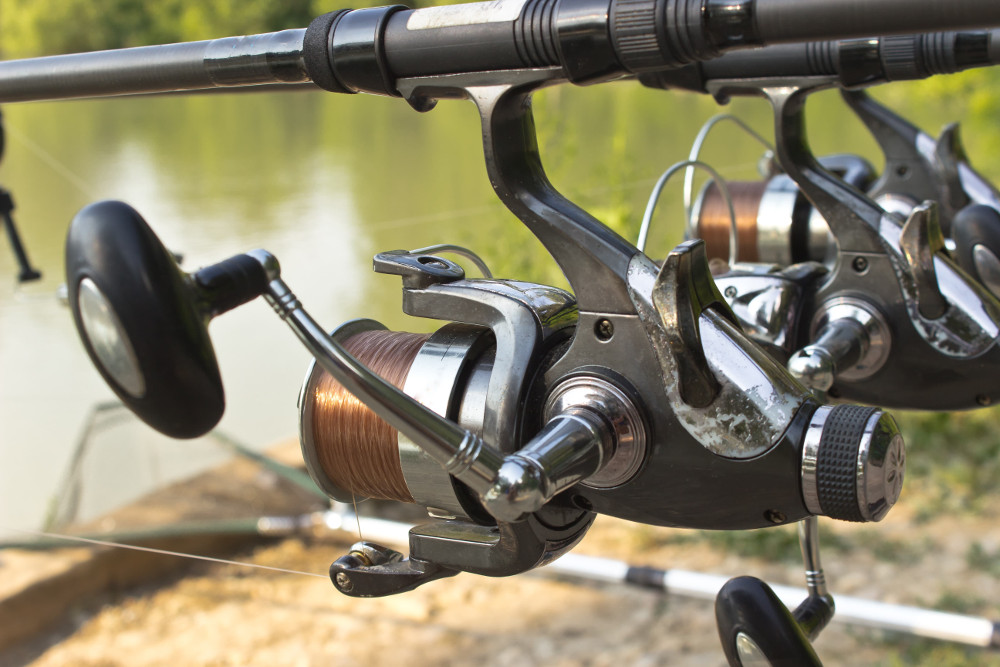
Like any sport, gaining a fundamental understanding of all the different equipment can seem daunting. Fishing in particular can seem even more difficult to grasp, as there is so much different equipment available for all sorts of fishing.
As you gain experience in the sport of fishing, you will start developing a hands-on approach to understanding all the different equipment. This is one of the best ways to learn, as you can have fun with it in the process and physically see and feel how the equipment behaves.
But what about the more important pieces of equipment that you will need no matter what? It’s not ideal to just pick gear at random, so having a good understanding of what makes some equipment different from the rest can go a long way. Therefore, in this article, we will provide a rundown of the different types of reels commonly available, which should help you narrow your potential selection, and maybe even provide some useful info for when you’re trying to land that trophy!
Different Types of Fishing Reels Detail Review
Spinning Reels
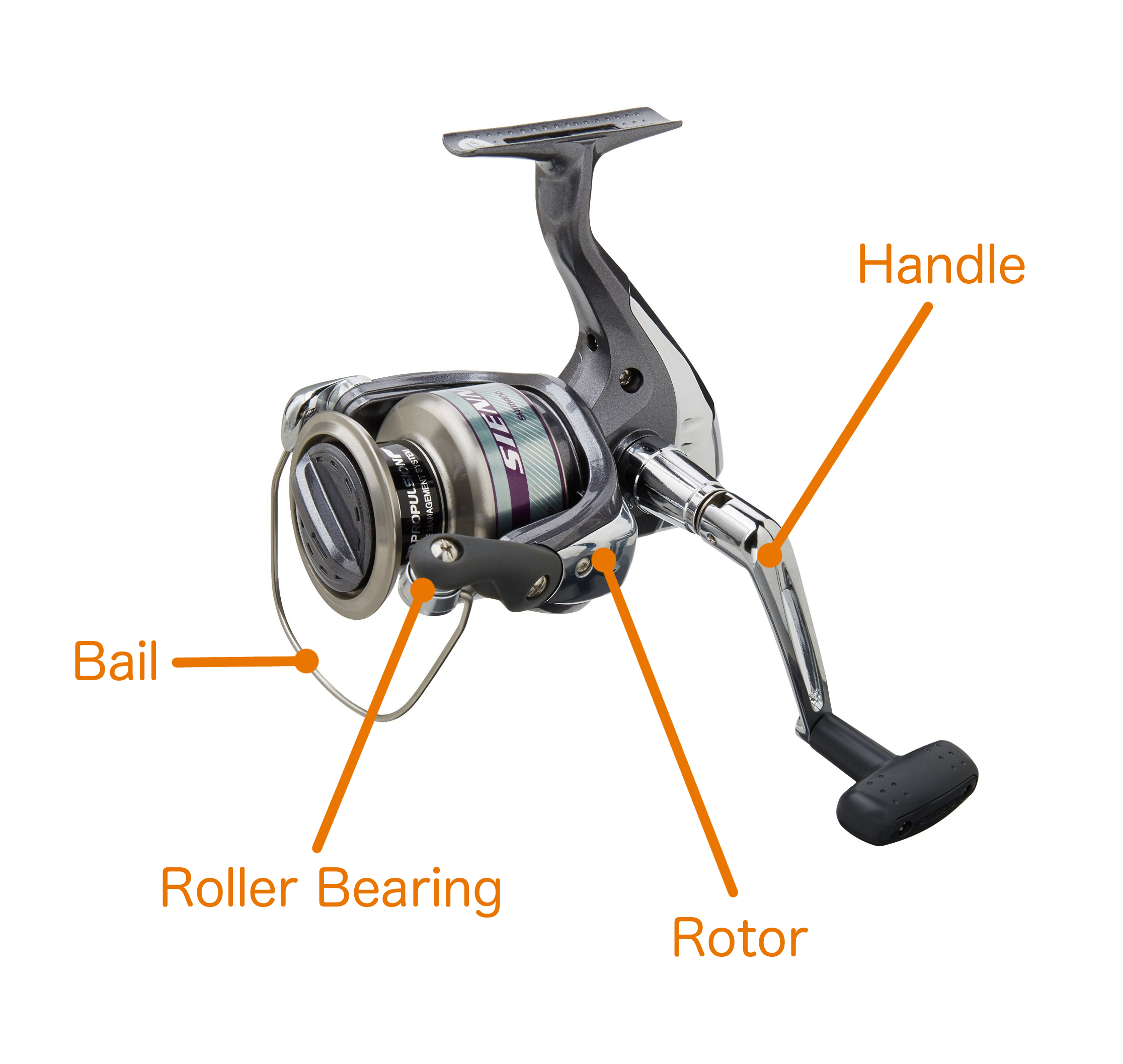
Spinning reels are the most popular and versatile type of reels. The come in a huge variety of sizes and cost, allowing almost every angler to find a spinning reel that suits their needs and budget.
On a spinning reel, the spool is the portion that the line wraps around. The heavier the line, the less amount you will be able to fit on the spool, as heavier line tends to be thicker. The spool itself is in a fixed position, but the bail or other similar rotation device will pick up the line on the retrieve and wrap it around the spool.
While the spinning reel itself may look complicated, casting and retrieving is actually very simple. To cast, you open the bail so that the line will be able to spin off the spool. In order to keep the line on the spool until the release point, most anglers will press the line against the rod with their index finger while they are in the back swing and forward swing, then when they want to release the line, they let go with their finger and the momentum of the lure will carry the line forwards toward the water.
This all sounds a little complicated when written out, but all of these steps can be done at your own pace while you’re learning the casting technique. Eventually it will be second nature and you can pinpoint your casts with great accuracy.
The retrieval is much more simple. All you need to do is rotate the handle which draws the line in towards you and back on to the spool. If a fish strikes the bait, you set the hook like with any other reel, and begin the fight! Spinning reels will have drag systems incorporated into the design that allow you to add resistance while the fish can pull the line out. At this point, if you’re just learning, don’t pay too much attention to the drag system. This is something that will take a little while to learn and requires hands-on experience. Once you get the hang of it, then you can begin to place more emphasis on the drag system when you’re looking for new spinning reels.
One extra thing to keep in mind is that not all spinning reels are suitable for saltwater. The salt will corrode lots of the metal components, even if you rinse the reel after use. Saltwater spinning reels address this issue by using more robust materials as well as specialized manufacturing processes like anodization. Given more effort and expensive materials go into the construction of saltwater spinning reels, these tend to be more expensive, but if you’re fishing a lot in the ocean, it could make a huge difference especially over the long term.
Pros and Cons of a Spinning Reel
- Versatile
- Widely available
- Lots available for different budgets
- Common – lots of help resources available
- Lots of anglers prefer them when casting lighter lures
- Ideal for lighter line
- Can open the bail and simply drop the bait, e.g. jigging.
- Will often come with a reversible handle (i.e. left- and right-handed).
- On the bigger side for reels both in terms of size and weight
- Less accuracy on medium to long casts
- More line memory
If you’re looking to add some fun into the mix, it could be worth considering an ultralight spinning reel as well. These reels are typically just scaled down versions of a normal spinning reel, but they are just as easy to use. These can be especially fun if you’re fishing for smaller fish. If you scale down your gear, primarily the bait, and pair it with an ultralight spinning reel, you can practice fishing with more finesse. That doesn’t necessarily mean “soft” fishing because if you even hook a small fish, the fight will be amplified due tot he scaled down gear!
Baitcasting Reels
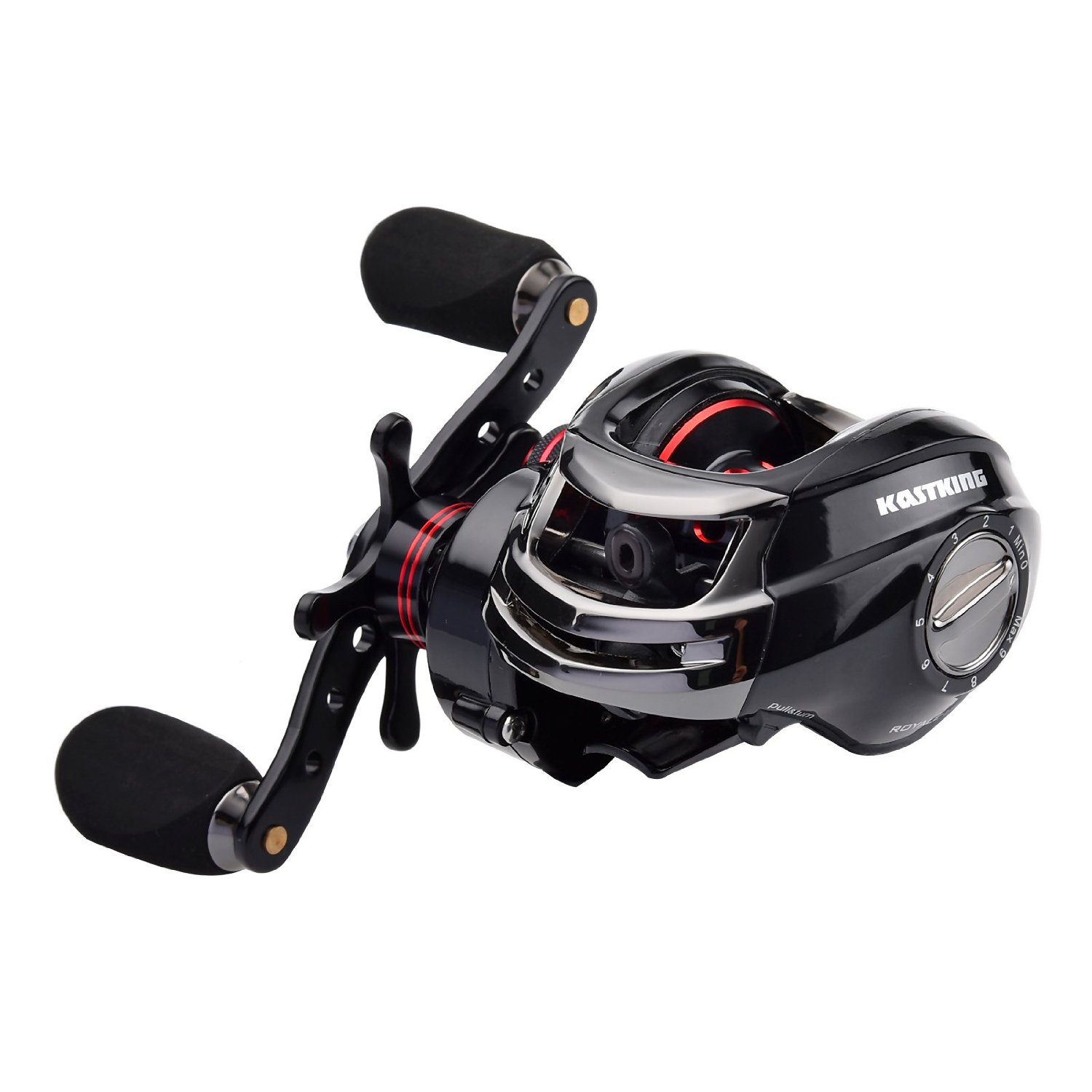
Baitcasting reels are interesting in that a lot of people are fairly intimidated to learn how to use them. They do require a little more experience and practice, but they offer some clear advantages that many anglers could benefit from. So while we don’t necessarily recommend baitcasting reels for those who are completely new to the world of fishing, we would still recommend staying engaged on the topic and trying them out whenever you get the chance.
One of the most visible and fundamental differences of a baitcasting reel is that it sits on top of the rod as opposed to hanging below the rod. The main reason for this is that you can use your thumb to apply a braking pressure to the reel as you cast the line or fight a fish. Additionally, this design provides a bit more leverage on the entire rod and reel system as a whole, which provides even more assistance when fighting a big one.
Baitcasting reels are known for providing the best distance and accuracy on the cast. Rather than a fixed spool, when you cast with a baitcasting reel, the spool will rotate and feed the line out as the lure travels through the air. Once you see the lure in the area where you would like it to drop, you hit the brakes, and it drops. This is part of the reason why they are more accurate.
If you have already done a bit of research, you will likely have seen the term “backlash”. The overall design of a baitcasting reel makes it susceptible to backlash, which is essentially a terrible birds nest of fishing line. When you think of the fact that the spool is actively rotating and feeding the line out, if your lure comes to a stop when it hits the water and you don’t apply any brakes, the spool will keep feeding the line out even though it really has nowhere to go, and the result is a backlash. However, with experience and practice, this can be a very rare occurrence, and the pain of having to gain enough experience to prevent it is often well worth it in the long run.
Pros and Cons of a Baitcasting Reel
- Best reels for distance and accuracy, great for fishing around heavy cover.
- Small and lightweight (mostly. Ones for big game fish are bigger, naturally).
- Lots of recent advancements to help prevent backlash
- Lots of gear ratio options
- Less line twist and memory
- For the size of the reel, handles larger lures and heavier line better
- Often preferred for larger fish
- Backlash, even when rare, can be a pain
- Usually a little more expensive
- Steeper learning curve
- Usually left- OR right-handed, but not interchangeable.
- Not ideal for really light lures and line
Spincast Reels
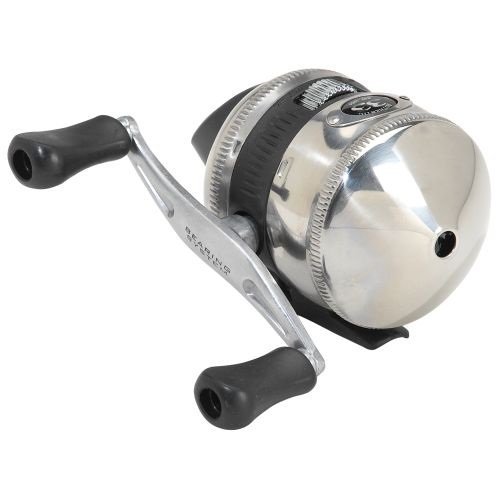
This is perhaps the simplest form of reel, often considered to be the worst-performing, and therefore we won’t spend too much time on it (generally speaking that is – you can get some decent well-performing spincasting reels). Spincasting reels are typically best for children, complete beginners, and should only be used with lighter gear for lighter fish.
Spincasting reels are almost completely encased in a “shell”. There is a button you press that allows an internal spool cover to pop up, and a pin that holds the line in place is removed, allowing the line to come off the spool. The tight space imposed by the enclosed design and the natural low-performance of the design keeps manufacturers from incorporating high quality components. Therefore, they often start to break down after frequent use, which requires taking the reel apart and trying to fix the problem.
One of the main problems occurs when the spool has been overfilled or the line has been on the spool forever and developed memory. If it can’t be smoothly released from the spool, it will usually create a birds nest inside, at which point you will have to take it apart.
Pros and Cons of a Spincasting Reel
- Really cheap
- Easy to use
- Good for children or complete beginners
- Low quality, particularly low durability
- Poor performance
- Suitable only for very small fish with light line
- Troubleshooting requires disassembly
Fly Reels
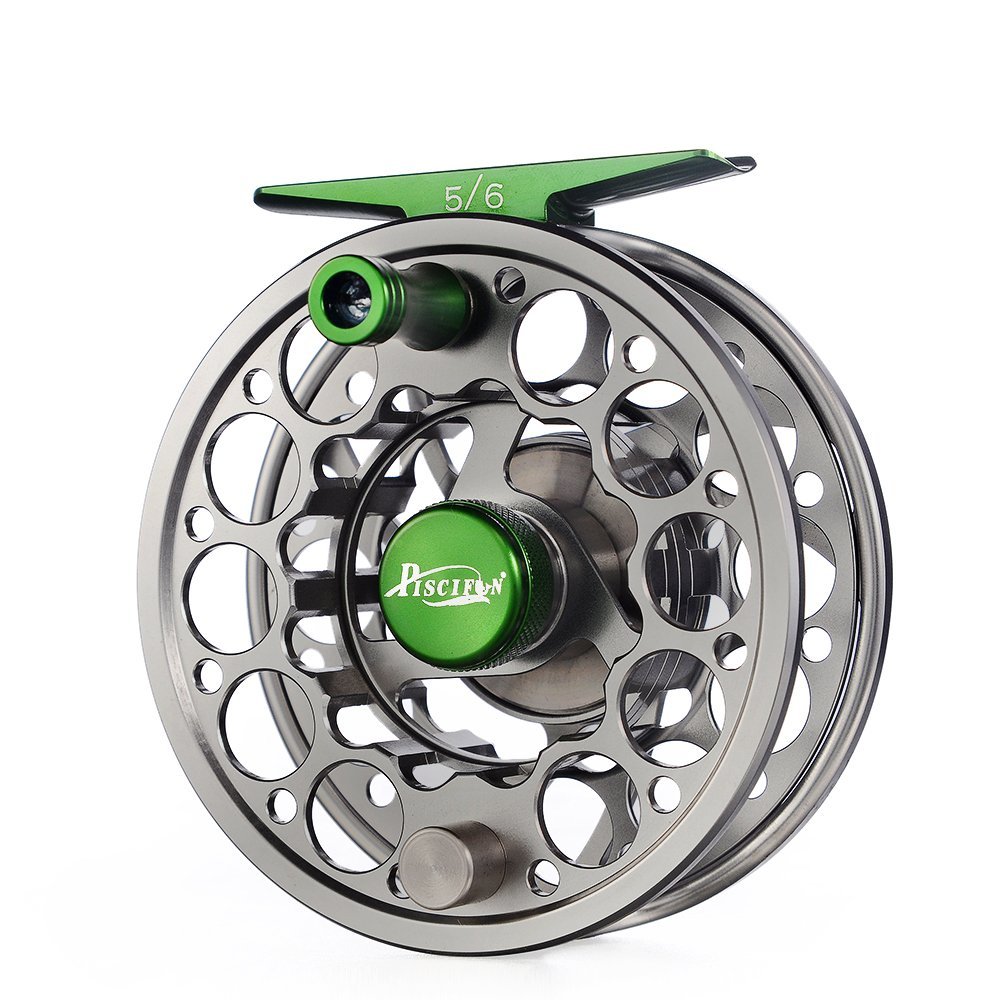
Fly Reels are way different because it involves a completely different form of fishing altogether, so once again, we won’t spend too much time discussing this form of reel.
If you are thinking of getting into fly fishing, awesome! Here are a couple things to know when looking for a fly reel. First, the come in different sizes or “weights”. Most are assigned values of 3-10, but you can find some outside of that range as well. In order to pair it with the correct rod, it’s ideal to match the weight of the reel with the rod. For example, if you are using a 7-weight rod, then a 7/8 fly reel will fit nicely.
Drag systems are similar to other reels, and many fly anglers find that this becomes more important as you begin to fish bigger and bigger fish. Standard drag systems should be ok for smaller fish like trout, but if you’re fighting some beast that will keep your line in the water for a while, then you should probably start paying more attention to the quality of the drag system.
One term that is fairly unique to the fly reel is “arbor”. This is the part of the fly reel that the backing and line will wrap around. They are usually categorized by a simple description: small, medium, and large. Smaller arbors will usually hold the most amount of backing and line, and are usually found on cheaper fly reels. The trade off is more line memory and twist, as well as a much slower retrieval rate. The complete opposite can be said for large arbor fly reels. If you’re not sure what’s best for you, go with a medium arbor!
